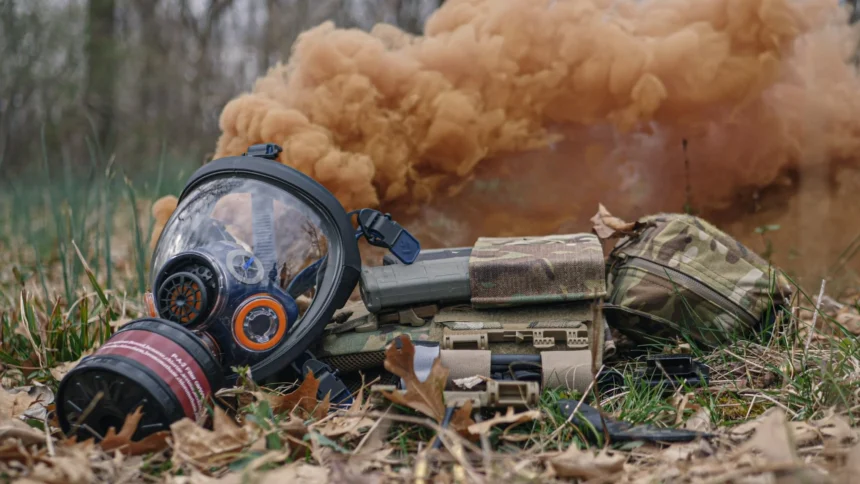Gas masks often conjure up images of survivalists preparing for the apocalypse or soldiers gearing up for combat. But these essential pieces of protective equipment serve a vital purpose far beyond dramatic scenarios.
In an unpredictable world where air quality can be compromised, understanding gas masks is more important than ever.
Whether you’re concerned about industrial hazards, natural disasters, or even civil unrest, knowing how to protect yourself and your loved ones is crucial.
This guide will take you through everything you need to know about gas masks—from their importance and types to maintenance tips and common myths surrounding them. Let’s dive in!
The Importance of Gas Masks
Gas masks play a crucial role in protecting individuals from harmful airborne contaminants. In situations where the air quality is compromised, these devices can be lifesavers.
Chemical spills, natural disasters, or terrorist attacks can release toxic substances into the atmosphere. A gas mask acts as a barrier against these threats, filtering out harmful particles and ensuring safer breathing.
Beyond emergency scenarios, many industries also require workers to wear gas masks when exposed to hazardous materials. From construction sites to laboratories, proper respiratory protection is essential for health and safety.
Moreover, being prepared with a reliable gas mask fosters peace of mind in uncertain times. This readiness not only safeguards physical health but also contributes to mental confidence during emergencies. Understanding the importance of gas masks empowers you to make informed decisions about your safety and well-being.
Types of Gas Masks
Gas masks come in various types, each designed for specific environments and threats. One of the most common is the full-face respirator. It provides comprehensive protection by covering the entire face, ensuring that both eyes and respiratory system are shielded from harmful substances.
Another popular type is the half-mask respirator. This option covers only the nose and mouth, making it lighter and more comfortable for short-term use. However, it doesn’t offer eye protection.
For industrial settings, powered air-purifying respirators (PAPRs) are often recommended. These devices use a battery-powered blower to push clean air through filters into a hood or mask, providing an extra layer of comfort during extended wear.
Military-grade gas masks typically feature advanced filtration systems to handle chemical agents effectively. They include additional features like speaking diaphragms for better communication in critical situations. Each type serves distinct purposes based on potential hazards faced by users.
How to Choose the Right Gas Mask for Your Needs
Choosing the right gas mask can feel overwhelming, but it doesn’t have to be. Start by identifying your specific needs based on potential threats in your environment, such as chemical agents or biological hazards.
Next, consider fit and comfort. A properly fitting mask ensures better protection and usability. Look for adjustable straps that accommodate various head sizes.
Filter type is another critical aspect. Different filters cater to different contaminants; some protect against particulates while others neutralize gases and vapors. Research which filters are compatible with your intended use.
Don’t overlook additional features like panoramic lenses for visibility or voice diaphragms for clear communication. Each detail matters when it comes to effectiveness in real-world scenarios. Take time to evaluate these factors before making a purchase decision.
Proper Maintenance and Care for Your Gas Mask
Proper maintenance of your gas mask is crucial for ensuring its effectiveness. Start with regular inspections. Check for any signs of wear, tears, or damage in the rubber and filters.
Cleaning is equally important. Use mild soap and water to wipe down the exterior surfaces. Avoid harsh chemicals that can degrade materials over time.
Don’t forget about storage. Keep your gas mask in a cool, dry place away from direct sunlight. This helps prevent degradation and extends its lifespan.
Filters have expiration dates too! Always check them before use, as expired filters may not offer adequate protection against harmful substances.
Familiarize yourself with manufacturer guidelines for specific maintenance instructions tailored to your model of gas mask. Staying proactive ensures you’ll be prepared when it matters most.
When and Where to Use a Gas Mask
Gas masks are essential tools in various scenarios. They can protect against airborne contaminants, making them vital during chemical spills, industrial accidents, or natural disasters like wildfires.
In urban areas, you might need a gas mask during protests or civil unrest when tear gas is deployed. Being prepared for such events ensures your safety.
Additionally, outdoor activities in polluted environments may warrant the use of a gas mask. High levels of smog or allergens can pose risks to respiratory health.
Always be aware of your surroundings and stay informed about local air quality reports.
When authorities issue warnings for potential hazardous conditions, it’s wise to have your gas mask accessible. Preparedness is key to protecting yourself from unseen dangers lurking in the air we breathe.
Common Misconceptions about Gas Masks
Many people think gas masks are only for soldiers or extreme situations. This isn’t true. Everyday citizens can benefit from having a gas mask on hand, especially in areas prone to environmental hazards.
A common myth is that all gas masks provide the same level of protection. In reality, different models are designed for specific threats, such as chemical agents or particulate matter. Choosing the wrong type could leave you vulnerable.
Another misconception is that once you put on a gas mask, you’re completely safe. While it does offer significant protection, it’s important to remember that proper fit and function are crucial.
Some believe they’re bulky and uncomfortable to wear for long periods. However, advancements in design have resulted in more lightweight options that prioritize comfort without compromising safety.
Conclusion
Gas masks play a crucial role in protecting individuals from hazardous materials, pollutants, and biological agents. Understanding the importance of these protective devices can empower you to make informed decisions about your safety and preparedness.
With various types available, it’s essential to know which gas mask meets your specific requirements. Factors such as intended use, comfort level, fit, and filtration capabilities should guide your selection process.
Once you have chosen the right model, proper maintenance is key to ensuring its effectiveness over time. Regular inspections and cleaning are vital steps that shouldn’t be overlooked.
Knowing when and where to utilize a gas mask enhances its benefits significantly. Whether you’re dealing with industrial chemicals or preparing for potential emergencies, being equipped with this knowledge empowers you further.
Many misconceptions surround gas masks; demystifying these myths can lead to better understanding and preparation among users. It’s always best to rely on factual information rather than assumptions.
Making an educated choice regarding gas masks can enhance personal safety during unpredictable situations while fostering peace of mind in times of uncertainty. Embrace awareness and stay prepared!





